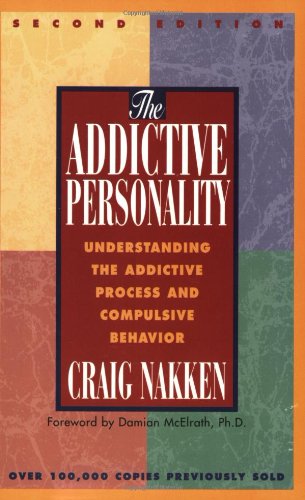Self-presentation: Impression Management And Interpersonal Behavior (Social Psychology Series) Review

Self-presentation: Impression Management And Interpersonal Behavior (Social Psychology Series) Review

Crossroads: The Multicultural Roots of America's Popular Music with Audio CD (2nd Edition) Review

Food and Nutrition Controversies Today: A Reference Guide Review

Is any food safe? Will mad cow disease kill us all? How many calories are really in your restaurant Caesar salad? Modern consumers are besieged with conflicting messages about food and nutrition, making it difficult for the lay person to know what to believe. This no-nonsense resource explores the latest controversies in the field of food and nutrition, presenting readers with the varying opinions and underlying facts that fuel these debates. Fifteen chapters focus on hot topics like organic food, bottled water, and deadly bacterial outbreaks as well as lesser known issues such as food irradiation, vitamin supplementation, animal growth hormones, and more.
One of the few resources of its kind, this informative reference is perfect for high school and college students and the conscientious consumer. Since most books on food and diet approach the issues with a clear agenda, this work's unbiased tone and evenhanded treatment of information make it a particularly valuable tool. Features include a detailed index, 20 black and white illustrations, and a rich and deep bibliography of print and electronic materials useful for further research.
Hybrid Cultures: Strategies for Entering and Leaving Modernity Review

Doing Cultural Studies: The Story of the Sony Walkman (Culture, Media & Identities, Vol. 1) (Culture, Media and Identities series) Review

Elementary Functional Analysis Review

Accounting Fundamentals for Health Care Management Review

How Everything Works: Making Physics Out of the Ordinary Review

If one didn't know better, one might think the world was filled with magic—from the household appliances that make our lives easier to the devices that fill our world with sounds and images. Even a simple light bulb can seem mysterious when you're clueless about the science behind it.
Now in How Everything Works, Louis Bloomfield takes you inside the amazing gizmos and gadgets that are part of the fabric of our everyday life, explaining the physics that makes them work. Examining everything from roller coasters to radio, knuckleballs to nuclear weapons, How Everything Works reveals the answers to such questions as why the sky is blue, why metal is a problem in microwave ovens, how MRIs see inside you, and why some clothes require dry cleaning.
You don't need a science or engineering background to understand How Everything Works. All you need is an active curiosity about the extraordinary world all around you. Remarkably clear and always fascinating, How Everything Works is nothing short of a user's manual for our everyday world.
A Walk Through Time: From Stardust to Us--The Evolution of Life on Earth Review

Molecules of Murder: Criminal Molecules and Classic Cases Review

More Damned Lies and Statistics: How Numbers Confuse Public Issues Review

The Fashion Reader Review

The Conscious Mind: In Search of a Fundamental Theory (Philosophy of Mind Series) Review

The Addictive Personality: Understanding the Addictive Process and Compulsive Behavior Review

For nearly a decade, The Addictive Personality has helped people understand the process of addiction. Now, through this second edition, author Craig Nakken brings new depth and dimension to our understanding of how an individual becomes an addict. Going beyond the definition that limits dependency to the realm of alcohol and other drugs, Nakken uncovers the common denominator of all addiction and describes how the process is progressive.
Through research and practical experience, Nakken sheds new light on:
The author examines how addictions start, how society pushes people toward addiction, and what happens inside those who become addicted. This new edition will help anyone seeking a better understanding of the addictive process and its impact on our lives.
Craig Nakken, M.S.W. a certified chemical dependency practitioner, is a lecturer at the Rutgers School of Alcohol Studies and the Florida School of Addictions. A worker in the field of addictions for more than 25 years, Nakken has a private practice in St. Paul, Minnesota and lectures nationally and internationally on topics related to addiction studies.
The Flip Side: Break Free of the Behaviors That Hold You Back Review

McGraw-Hill's Dictionary of American Slang and Colloquial Expressions: The Most Up-to-Date Reference for the Nonstandard Usage, Popular Jargon, and Vulgarisms of Contempos (McGraw-Hill ESL References) Review

More bling for the buck! The #1 guide to American slang is now bigger, more up-to-date, and easier to use
This new edition of McGraw-Hill’s Dictionary of American Slang and Colloquial Expressions offers complete definitions of more than 12,000 slang and informal expressions from various sources, ranging from golden oldies such as . . . golden oldie, to recent coinages like shizzle (gangsta), jonx (Wall Street), and ping (the Internet). Each entry is followed by examples illustrating how an expression is used in everyday conversation and, where necessary, International Phonetic Alphabet pronunciations are given, as well as cautionary notes for crude, inflammatory, or taboo expressions.
This edition also features a fascinating introduction on “What is Slang?,” a Thematic Index that cross-references expressions by standard terms--such as Angry, Drunk, Food, Good-bye, Mess-up, Money, and Stupidity--and a Hidden Word Index that lets you identify and locate even partially remembered expressions and phrases.
The Mystery of Samba : Popular Music and National Identity in Brazil Review

But how did Brazil become "the Kingdom of Samba" only a few decades after abolishing slavery in 1888? Typically, samba is represented as having changed spontaneously, mysteriously, from a "repressed" music of the marginal and impoverished to a national symbol cherished by all Brazilians. Here, however, Hermano Vianna shows that the nationalization of samba actually rested on a long history of relations between different social groups—poor and rich, weak and powerful—often working at cross-purposes to one another.
A fascinating exploration of the "invention of tradition," The Mystery of Samba is an excellent introduction to Brazil's ongoing conversation on race, popular culture, and national identity.